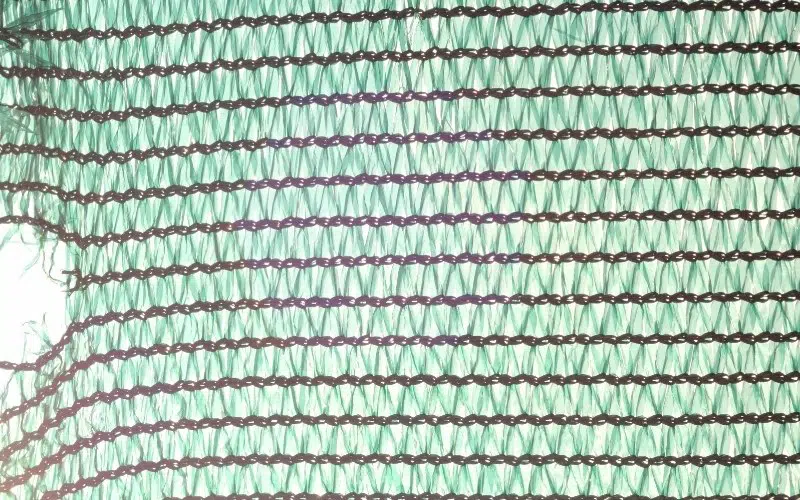During the height of summer, it can be hard to keep your plants from being stressed out by the heat. That’s exactly what shade cloth is great for.
What is Shade Cloth?
Shade cloth is a type of fabric that does what it sounds like – it provides shade. This is critical for some gardeners who live in deserts and warm climates with brutal summer heat. Shade cloths block a certain amount of direct sunlight and allow cool air to
Shade cloth does allow for water to pass through.
Shade Cloth Density Guide
Shade cloth comes in varying degrees of shade densities, ranging from 5-95%. The difference in percentages is how much light is allowed to penetrate.
Shade cloth will block out that percentage of sunlight to protect your plants. If you get 50% shade cloth, it will block out 50% of sunlight.
Here are some example densities to use during a hot summer:
| Plant Type | Hotter Regions | Cold Climates |
| Tomatoes | 40% | 20-30% |
| Lettuce & Salad Greens | 40-50% | 30% |
| Squash | 40% | 20-30% |
| Peppers | 30% | 20-30% |
| Ferns | 90% | 70-85% |
| Orchids | 90% | 70-85% |
| Other Flowers | 60% | 50% |
| Spinach | 40-50% | 30% |
Knitted vs Woven Shade Cloth
The two most common varieties of shade cloth are knitted and woven. Each has its pros and cons, but here is a quick snapshot of the two.
| Knitted Shade Cloth | Woven Shade Cloth | |
| Materials | Polyethylene | Woven polypropylene |
| Weight | Lightweight | 30% heavier |
| Price | Cheaper, but not as strong | Around 30% more expensive |
| Pros | Resists tearing | Strongest of the two |
| Cons | Not as strong as woven | Unravels if it gets a hole |

The Different Colors of Shade Cloth
Shade cloth also comes in a variety of colors aside from black. These different colors include blue, green, black, white, and red.
If you know about grow lights, you might know a bit more about the colors of shade cloth and what they are best used for.
Red shade cloth is great for the flowering stage, as it will promote early blooming. Leaves will get bigger, stems get thicker, and you’ll usually see more plant growth with this color during this stage.
Where Shade Cloth Can Be Used
You can use shade cloth to protect your vegetable garden, fruit trees, and more.
These can be used in all kinds of environments:
- High tunnels
- Greenhouses
- Raised beds
- In-ground gardens
Shade fabric can help filter light but doesn’t block it so you can rest assured your plants are getting enough sunlight.
Shade cloth can also be used over top of a greenhouse in the height of summer to reduce the need for more complex ventilation systems.
Benefits of Shade Cloth
There are a number of benefits to using shade cloth to provide protection for your plants.
1. Increased Plant Yield and Production
Yep, not only does excess heat cause plants and vegetables to wilt and dry out, but they can actually harm the structure of its cells and cause permanent damage.
Photosynthesis peaks out around 35-40 degrees Celsius (95-104 degrees Fahrenheit). Anything above those temperatures causes proteins to get destroyed and can cause deformed membranes.
While this isn’t going to be relevant in all parts of the world, in places with super hot summers like Arizona and Australia, this is something you’ll need to keep an eye on. Although even the east coast US is starting to get super warm summer days, so it’s good to keep in mind.
Keeping your plants in an environment that is stable in the 15-40 degrees C range is going to help with an increased yield and healthier plants. And shade cloth protects plants from that hot sun and blazing summer heat.
2. Reduce Costs
Shade cloth can help keep water costs lower, as you won’t need to water your plants multiple times a day to keep them moist.
But these cloths can also help keep energy bills down if used overtop of greenhouses or shade houses and even the patio.
What Percentage Shade Cloth Should You Get?
Determining the degree of shade you’ll need from your shade cloth can be a little tricky.
If you’re growing a plant that thrives in shade (i.e. orchids or ferns) you’ll want to get a higher degree of shade, around 70%. If you’re growing plants that are tolerant to heat and thrive with more sunlight, you’d probably do best around 40-45% shade.
Where & How to Install Shade Cloth
You can install your shade cloth vertically or horizontally depending on your area and the plants you have in your garden. A horizontal setup can be used to provide shade all day, while a vertical setup would mimic the type of shade a tall tree or bush would have during different points of the day.
It’s usually best to install shade cloths on the western edge of the garden to help protect plants from the hot afternoons – when they’re more susceptible to drying out and wilting.
Shade cloth often comes with grommets to help with installation. You can use those grommets to attach the shade cloth to posts or bamboo stakes in the ground. If your cloth doesn’t come with grommets, you can attach clips that will make it easier to attach them to your poles.




You have a VERY interesting site. THANK YOU
Thanks so much! I appreciate all the information you have shared here.